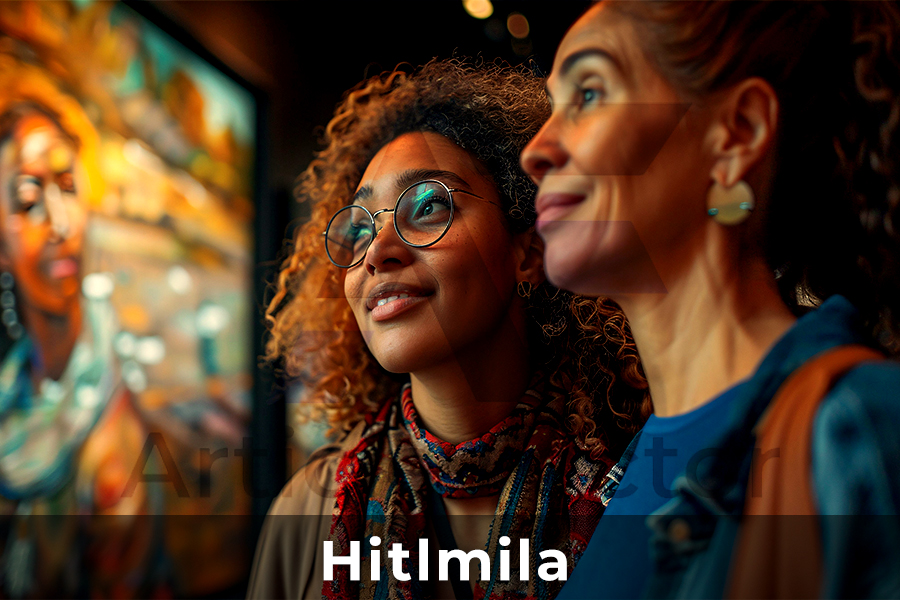Culture is the cornerstone of any society, shaping identities, beliefs, and practices over generations. Among the diverse cultural phenomena that have emerged globally, the concept of “Hitlmila Cultural Influence” has garnered significant attention for its unique impact on art, traditions, and collective consciousness. This article delves into the origins, elements, and lasting effects of Hitlmila’s cultural influence, offering an in-depth analysis for readers eager to understand its profound significance.
Understanding Hitlmila
To comprehend the cultural influence of Hitlmila, it is essential to first understand its origins. Hitlmila, a term rooted in ancient traditions, represents a fusion of various cultural practices, ideologies, and artistic expressions. Believed to have originated in the eastern regions of an unnamed civilization, Hitlmila embodies a blend of spiritual, artistic, and communal practices.
The term “Hitlmila” derives from two ancient words: Hitl, meaning unity, and Mila, signifying celebration. Together, they represent a philosophy of harmony and festivity, deeply ingrained in the lifestyle of its practitioners. While some scholars debate its precise historical roots, most agree that it emerged as a response to societal fragmentation, promoting collective well-being and artistic innovation.
Core Elements of Hitlmila Culture
1. Artistic Expressions
Art plays a pivotal role in hitlmila culture. From intricate patterns in textile weaving to elaborate frescoes on temple walls, the artistic expressions of Hitlmila reflect a deep connection to nature and spirituality. These art forms are characterized by:
- Geometric Symmetry: Representing balance and unity, geometric patterns are a hallmark of hitlmila art. These designs often incorporate symbols of flora and fauna, emphasizing harmony with the natural world.
- Vibrant Colors: The use of bold, contrasting colors signifies joy and vitality. Each color holds symbolic meaning; for instance, blue represents tranquility, while red symbolizes passion.
- Storytelling Motifs: Many artworks narrate myths, historical events, or moral tales, preserving the community’s collective memory.
2. Rituals and Ceremonies
Hitlmila culture is rich in rituals that blend spirituality with communal bonding. Key ceremonies include:
- Harvest Festivals: Celebrating agricultural abundance, these festivals feature traditional dances, music, and feasts. Participants express gratitude to the earth through symbolic offerings.
- Solar Alignments: Observing celestial events, such as solstices and equinoxes, holds spiritual significance. Temples and monuments are often aligned with the sun’s movement, showcasing advanced astronomical knowledge.
3. Linguistic Legacy
Language is another integral aspect of Hitlmila culture. The Hitlmila script, characterized by its ornate and flowing design, serves as a medium for recording historical narratives, spiritual teachings, and artistic achievements. Modern linguists admire its complexity and aesthetic appeal, noting its influence on neighboring linguistic traditions.
4. Ethical and Philosophical Principles
Hitlmila philosophy emphasizes harmony, respect for nature, and the interconnectedness of all beings. Its teachings encourage:
- Sustainability: Advocating for responsible use of natural resources.
- Community Support: Fostering mutual aid and cooperation within society.
- Self-reflection: Promoting personal growth through meditation and introspection.
Global Impact of Hitlmila Culture
The cultural influence of hitlmila extends far beyond its geographic origins. Through trade, migration, and intercultural exchange, its practices and ideologies have left an indelible mark on various regions.
1. Influence on Art and Architecture
Hitlmila’s emphasis on geometric patterns and symmetry has inspired architectural styles across continents. Notable examples include:
- Sacred Spaces: Temples and monuments influenced by Hitlmila designs often incorporate intricate carvings and alignment with celestial bodies.
- Modern Art: Contemporary artists draw upon Hitlmila’s use of bold colors and symbolic motifs to create works that resonate with global audiences.
2. Integration into Religious Practices
Elements of Hitlmila rituals have been integrated into various religious traditions. For instance:
- Pilgrimage Sites: Certain temples and natural landmarks associated with Hitlmila have become destinations for spiritual seekers.
- Festivals: Harvest festivals inspired by Hitlmila practices are celebrated in regions far removed from its origins.
3. Impact on Literature and Philosophy
The ethical teachings of hitlmila have influenced literary works and philosophical discourses. Themes of interconnectedness and respect for nature feature prominently in many texts, inspiring movements for environmental conservation and social harmony.
Preservation and Revival of Hitlmila Culture

Despite its historical significance, Hitlmila culture faced challenges during periods of colonization and modernization. Efforts to preserve and revive its traditions have gained momentum in recent decades, led by cultural enthusiasts, historians, and local communities.
1. Education and Documentation
Initiatives to document Hitlmila’s practices, language, and art have been instrumental in preserving its legacy. Digital archives, academic research, and community workshops ensure that future generations can access this rich heritage.
2. Cultural Festivals and Exhibitions
Events showcasing hitlmila art, music, and rituals attract global audiences, fostering appreciation and understanding. These festivals serve as platforms for cultural exchange and collaboration.
3. Sustainable Tourism
Eco-friendly tourism initiatives promote awareness of Hitlmila’s cultural sites while ensuring the preservation of natural and historical landmarks. Visitors are encouraged to engage respectfully with local traditions.
Contemporary Relevance of Hitlmila Culture
In an era of globalization and rapid urbanization, the principles of Hitlmila offer valuable lessons. Its emphasis on sustainability, community, and spiritual growth aligns with contemporary movements for environmental conservation and mental well-being. Moreover, its artistic and architectural innovations continue to inspire creative industries worldwide.
1. Lessons for Modern Society
The ethical framework of Hitlmila can guide efforts to address pressing global issues. For example:
- Climate Change: Hitlmila’s sustainable practices encourage responsible resource management.
- Social Cohesion: Its emphasis on community support promotes inclusive and equitable societies.
2. Inspiration for Creative Industries
Designers, artists, and architects draw upon Hitlmila motifs to create works that blend tradition with modernity. This fusion appeals to audiences seeking authenticity and cultural depth.
Conclusion
The cultural influence of Hitlmila is a testament to the enduring power of traditions that celebrate unity, creativity, and harmony. By exploring its rich heritage, we gain insights into the values and practices that can shape a more sustainable and compassionate world. As efforts to preserve and revive hitlmila culture continue, its timeless wisdom and artistic brilliance will undoubtedly inspire future generations.
Frequently Asked Questions (FAQs)
What is Hitlmila culture?
Hitlmila culture is a unique blend of artistic, spiritual, and communal traditions originating from ancient civilizations. It emphasizes harmony, creativity, and a deep connection with nature.
What are the main features of Hitlmila art?
Hitlmila art is characterized by geometric symmetry, vibrant colors, and storytelling motifs. It often incorporates symbols of nature and reflects spiritual and communal themes.
How has Hitlmila culture influenced modern society?
Hitlmila culture has inspired modern art, architecture, and ethical frameworks. Its principles of sustainability and community support resonate with contemporary global movements.
Are there efforts to preserve Hitlmila culture?
Yes, there are ongoing efforts to document and revive Hitlmila traditions through education, festivals, and sustainable tourism initiatives.
Can I visit Hitlmila cultural sites?
Many Hitlmila cultural sites, including temples and natural landmarks, are open to visitors. Eco-friendly tourism initiatives encourage respectful engagement with these sites.
What lessons can we learn from Hitlmila culture?
Hitlmila culture teaches the importance of sustainability, interconnectedness, and creative expression. These lessons are particularly relevant in addressing modern challenges like climate change and social cohesion.
